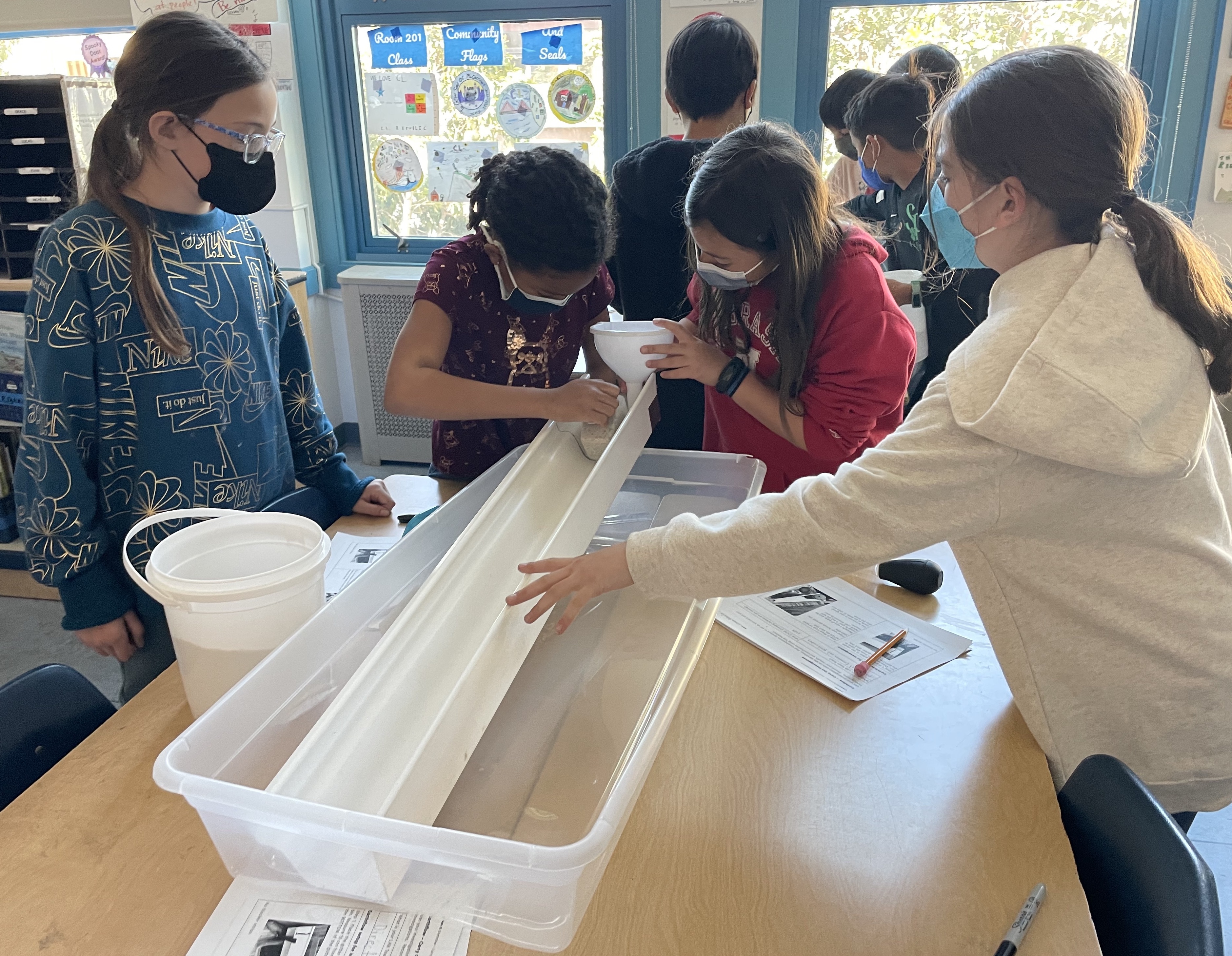feature
How it All Happened
Cause and effect as a lens and thinking tool to observe and make sense of two puzzling phenomena.
Science and Children—Fall 2023 (Volume 60, Issue 7)
By Lindsey Mohan, Emily Harris, and Candice Guy-Gaytán

A circle of fourth-grade students sit around Mrs. Ray, who shows videos and images of two natural events: large rocks that have fallen from a cliffside and large rocks in the middle of a dry stream near a road. She asks, “What caused these events to happen? How do we think the changes caused by these events affected the land, waters, and living things?” Her students share their initial ideas. For the first event, a student suggests, “a big gust of wind pushed on a weak rock.” A second says, “maybe there was an earthquake and it shifted it.” Mrs. Ray records students’ ideas on an initial class model. Then she focuses students on potential effects. Students share concerns about drinking water for animals, blocked waterways causing flooding, and “cracked trees” that are homes to birds and small critters. Mrs. Ray points to the second event and asks students to consider its causes and effects. A student says, “maybe the rocks were on the side of the river and the river flooded and the rocks went into the river and smashed together.” For possible effects, students share that maybe, “the road got blocked” and “cars got stuck on the road.” Mrs. Ray asks, “How sure are we about our ideas? Do we have any questions we’re wondering about?”
Crosscutting Concepts Phenomena Elementary


